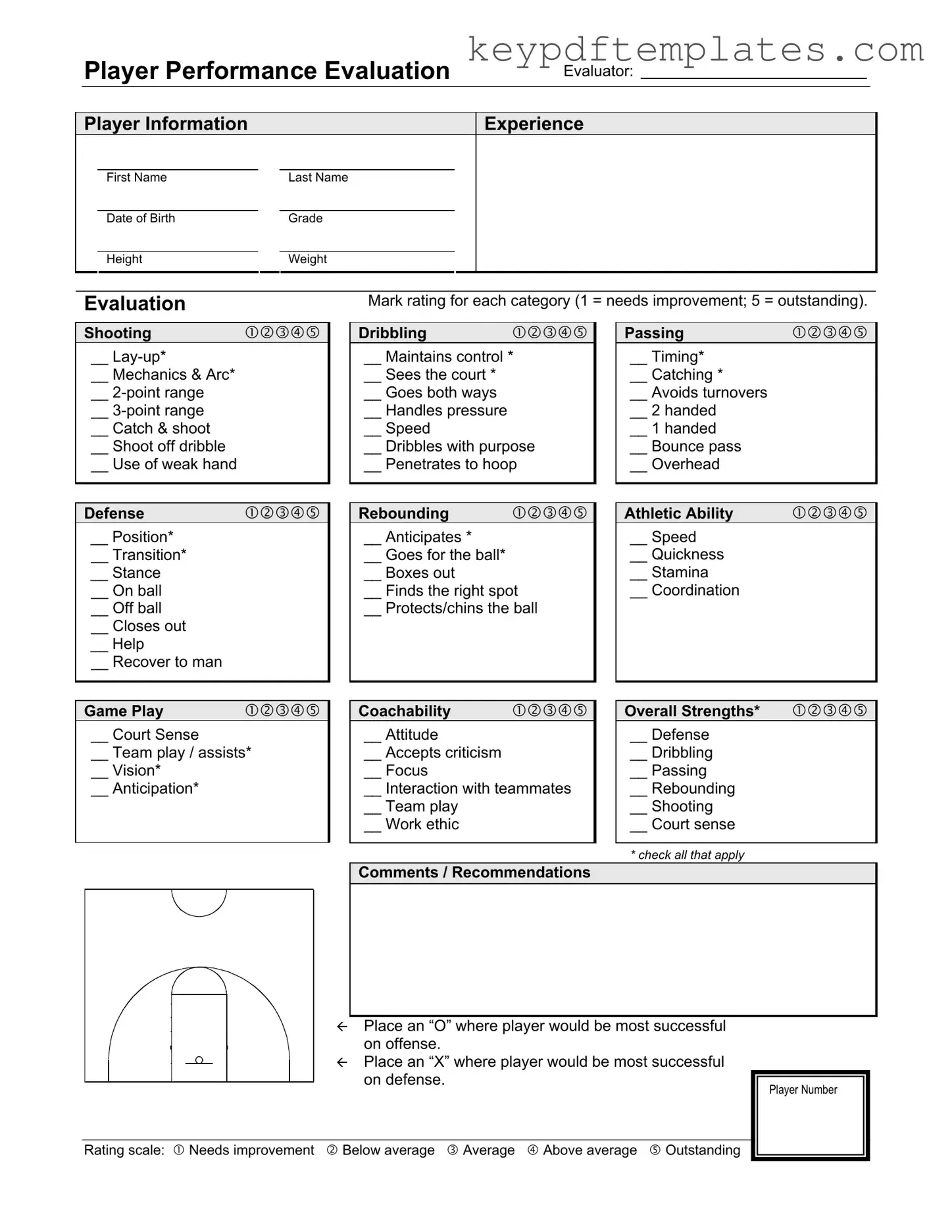Get Basketball Evaluation Form
The Basketball Evaluation Form is a comprehensive tool designed to assess a player's performance across various skills and attributes. This form allows evaluators to rate players in categories such as shooting, defense, dribbling, and overall athletic ability, providing valuable insights into their strengths and areas for improvement. By systematically documenting these evaluations, coaches can make informed decisions about player development and team dynamics.
Modify Document Online
